Pliers: what they are, types and applications
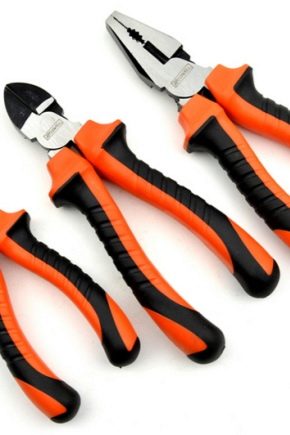
Not all people can distinguish pliers from pliers, but for many of them this is not so important. However, those workers or home craftsmen who often come across such tools and their varieties in their work simply need to know about this. And the differences both in appearance and form, and in application, they are quite significant. Let's take a closer look at what pliers are and where they will be most useful.
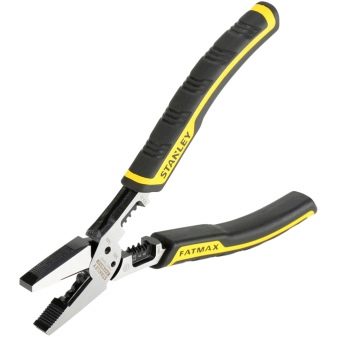
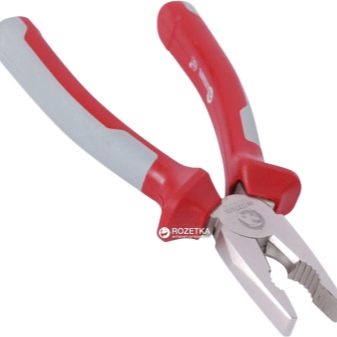
What it is?
Pliers are hand tools with flat gripping lips and mostly notches on the working surface. With this tool it is convenient to grip various objects, metal sheets, wire, bend, hold, remove and perform other work in both plumbing and electrical engineering.
Pliers can be called pliers, which combines them with pliers. Both types of tool allow you to grip different objects. The jaws of the pliers are pyramidal in shape with a rectangular cross-section. Pliers are similar in some ways to pliers, but they have rounded notches in the form of sponges, which allows them to hold round objects.
Description of domestic pliers can be seen in GOST 7336-93. According to the document, they can be with a shortened or elongated working part. The size of the first is 2.5-5.5 cm, and the second is 5.5-6.3 mm. The length of the jaws is usually related to the dimensions of the clamping handles. The latter are simple or with insulated overlays.
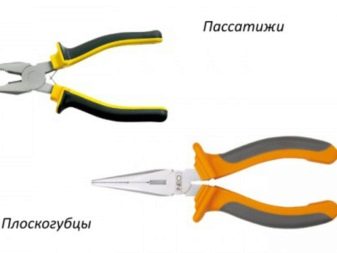
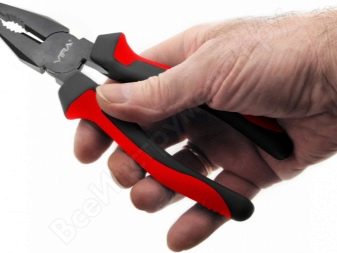
The parameters of hand-held pliers are regulated by GOST 11563-94. Manufactured tools can be 12.5–22 cm in size. In addition to the total length, the materials from which the tool is allowed to be made are also regulated. U7A carbon steel is characterized by double hardening with high strength parameters. The decorative lacquer must provide protection against corrosion. There are three possible application methods:
- the method of chemical oxidation gives the instrument a dark gray shade of the coating with a dark sheen;
- the method of chemical phosphating gives a matte gray color option, but the color of the instrument can be either light or dark;
- chrome plating, which has the most strength anti-corrosion characteristics.
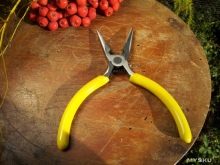
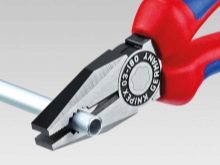
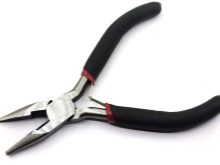
Specifications
Pliers and pliers differ in technical characteristics. The first ones do not look as solid as the second ones, and they can do less work. The pliers only allow you to grip the product slightly. Only pliers can securely clamp them. In addition, the former do not do well with round objects. The latter have, as mentioned above, a special notch with a large notch, with which you can reliably grab rods, studs, bolts and even nuts.
Side cutters with pliers allow you to cut not only wire, but also thin nails. Due to the additional functions, the tool received a second name - "combination pliers".
The latter, by the way, have one immovable rotary axis of the handles. Many types of pliers have two pivot positions, which expand their ability to grip objects (small and large).
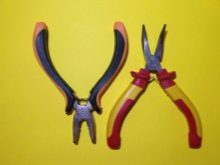


However, some types of pliers can work in places that cannot be reached with another tool. For this, the individual pliers are specially equipped with a curved work surface. Long and narrow pliers are considered suitable for small space conditions. Special attachments, which consist of soft materials, help in holding fragile materials. Pliers for electricians, like pliers, have insulated handles that provide protection against electric shock. Such products contain markings that indicate the maximum voltage with which the tool can be operated (usually up to 1,000 volts).

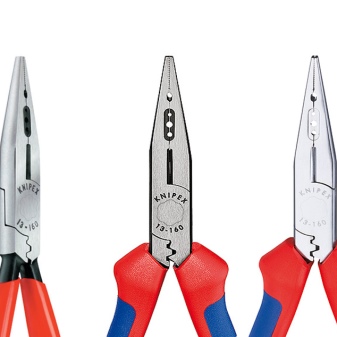
Advantages and disadvantages
The main advantages are contained in the following paragraphs.
- Convenient tool size that allows high-precision work.
- Nickel-plated working part. This protects the metal from premature corrosion.
- The steel working part is highly durable. This increases the resistance to stress.
- Comfortable handles make it possible to use the tool with one hand. The brush will not get overloaded even with prolonged work.
- Additional comfort is provided by polymer grip covers. This improves the ergonomics of the instrument.
The minus of almost all pliers is contained in the narrow-profile (household) direction of the tool. This tool is rarely used by professional craftsmen. They usually prefer the more versatile tool, the pliers.
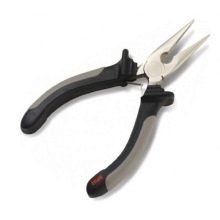

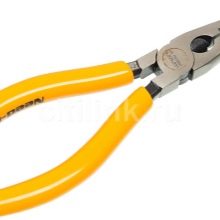
Types and their application
The choice of pliers is difficult, as they come with a retainer, small, folding, large, narrow. The main division of the tool by type implies a difference in the size of the working jaws. Depending on this, the purpose changes.
- Round nose pliers. For example, cable conductors are easier to handle with round nose pliers. The working surface of this type of tool has a long conical shape. Such options are often supplied with nippers. The models are easy to use, as they have special plastic attachments. It is convenient to use round nose pliers to fix the boards during soldering. If the angle of inclination of the working part of the round-nose pliers is different, you can get to the most inaccessible places of complex boards.
- Sliding. They are called adjustable tools and are considered suitable tools for bending sheet metal and removing clamps. With such pliers, you can also perform other work related to the processing of materials.
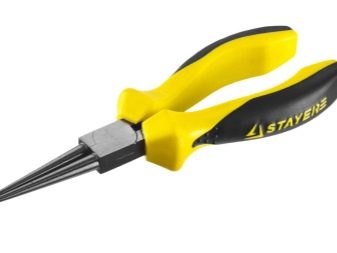
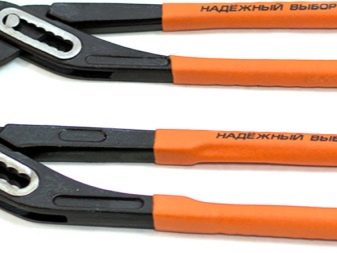
- Adjustable. Very durable steel is used for the manufacture of these models. The tool is characterized by a galvanized coating. Therefore, it is suitable for assembly shops, home use and bus station use.
- Clamping or crimping. The clamping pliers are made of robust steel and are versatile and compact. They can be used to crimp common wires such as telephone wires.
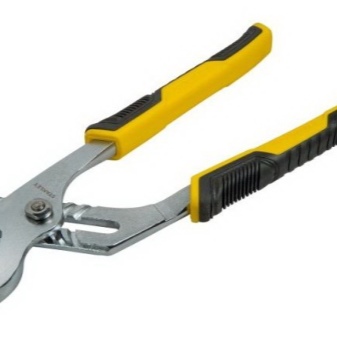
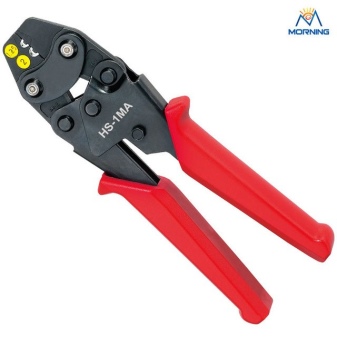
- Dielectric. The options are also called electrician's pliers. Base grade - electric steel. The release lips are hardened in a special way in oil. The edges are additionally reinforced with a high frequency current. The tool can cut, grip and bend any wire. Pliers are ideal for large cable networks. Pliers are suitable for removing retaining rings, for stripping wires, for stripping insulation.
- Elongated. The tool is also called "platypus pliers". They differ in the external characteristics of the working lips. Pliers are convenient for gripping tubes and objects with different shapes. The base of the working part of this tool is characterized by increased strength.
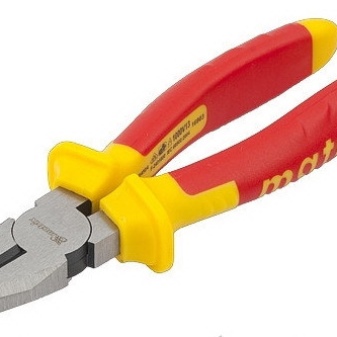
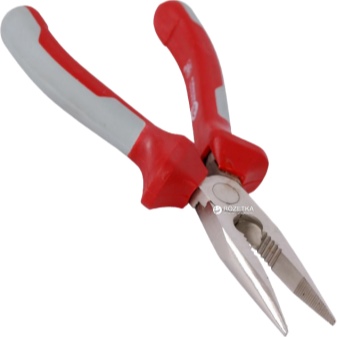
- Curved. These pliers are the best in jewelry making. The instrument features a tapered and thin tip diameter of only 2 mm. The working platform is characterized by a non-grooved surface.
- Mounting. These types are supplied with special attachments that allow you to work with fragile objects.The tool is characterized by improved quality and smooth running.

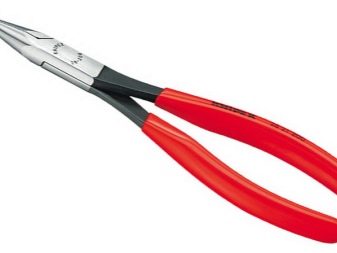
How to choose?
When choosing pliers, you need to take a closer look at some of their features, for example, at the material of working parts. Steel options with strength characteristics and chrome plating are more expensive than conventional types. But it is better to purchase just such, thereby extending the useful life of the product.
If the tool is to be used in electricity, then it must necessarily be with insulated surfaces of the handles. It is best to choose hardened tool edges.
- The width of the gap between the jaws of the handcrafted product is important. Accuracy when gripping will provide a distance of 1 mm.
- The optimum cutting edge size (where available) is 0.1 mm.
- The handles of the tool should have a good connection to the axis, and the stroke should be smooth and without delays.
- The options and features of the toolkit are selected for specific work.
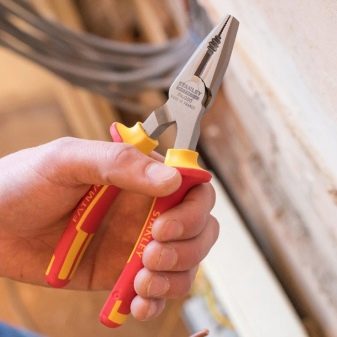
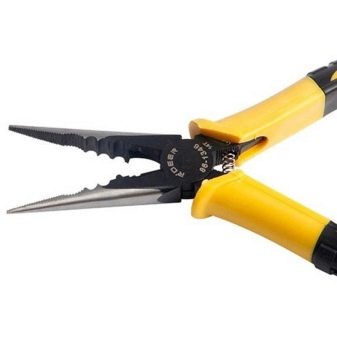
Safety rules at work
Correctly selected tools not only facilitate the tasks of performing the work, but also carry a certain amount of health protection, especially if, along with this, all the necessary rules for personal safety are observed.
The danger to health is not only the use of tools for other purposes, but also the malfunction of even work equipment that is quite suitable for all standards. Malfunctions include: cracks on the working surfaces of the pliers, chiseliness of the notches on the lips of the grip, tight working stroke of the handles, violation of the insulation of the handles, loose grip of the jaws, and much more. Hence the conclusion: it is important to check the tool for serviceability, and the check should be carried out before each type of work.
The service life of the tool will prolong its careful use. Important parameters of the storage area are cleanliness and dryness. Defective components such as grip covers or worn grips must be replaced. If the rest of the tool is of good quality, you can continue to use it.

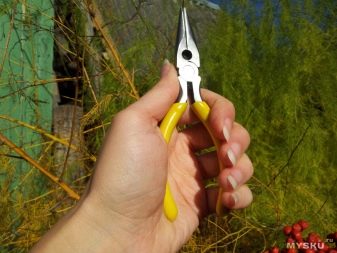
For carrying hand tools, it is optimal to have a special box. Do not apply excessive force or pressure to the pliers. It is not recommended to work with the tool, directing the cutting part towards you. No need to put on thick gloves on your hands. Pliers with awkward handles are best avoided at all. Wide handles are considered comfortable, which are characterized by a soft coating. In this case, there must be sufficient distance between the handles themselves to prevent pinching of the fingers. Optimally - 6-9 cm.
Pliers come in a variety of shapes and sizes, but it is not recommended to expose any of them to high temperatures. Hard wire should not be cut with light pliers. The tool is not recommended to be used as a hammer. You can't hit them on the wire to cut it. It is not recommended to lengthen small pliers. It is best to use wrenches for nuts and bolts.
Regular lubrication is recommended for any tool. Pliers oil is recommended to be applied to the hinges. One drop after each use is enough and your tool will become easier to work with. The handles of an unlubricated tool will be difficult to pull apart.
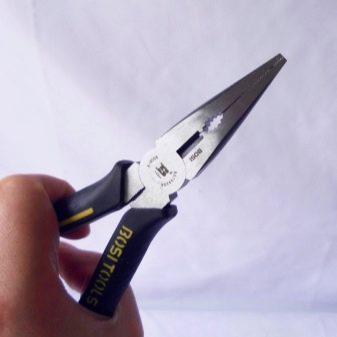
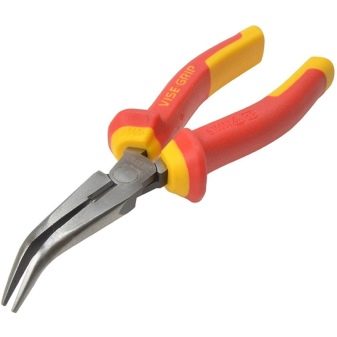
For an overview of the Gross pliers, see the following video.













The comment was sent successfully.